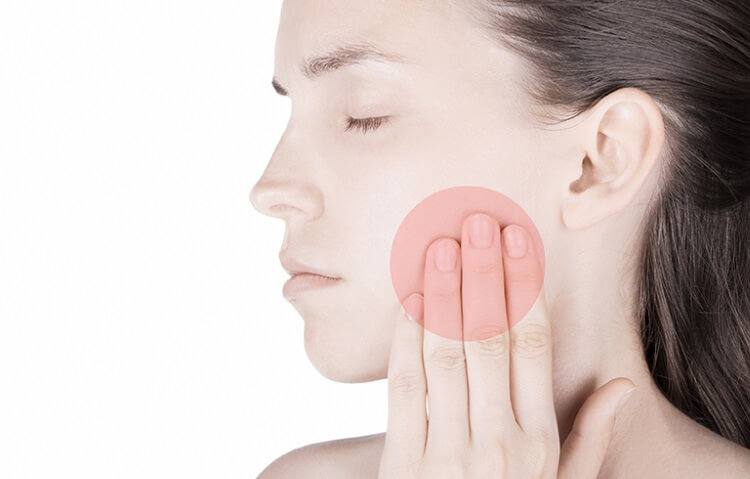
Between 5 and 12% of the US population suffers from temporomandibular disorder (TMD), which broadly describes dysfunction in the temporomandibular joint (TMJ) found in the skull. This joint connects the lower jaw to the upper jaw. TMD/TMJ disorder disproportionately affects young people and women.
Clicking in the jaw while chewing is a prime indicator of TMD. An inability to fully open the mouth, or pain in the ear, jaw or face are other symptoms.
But what’s to be done about this problem? Is it something you see your doctor about, or do you go to the dentist?
How about a physical therapist?
Because the cervical vertebrae and neck are implicated in TMJ function, you can relieve your TMD/TMJ with physical therapy and everyday exercises.
How is TMD provoked?
Sitting for prolonged periods can mean slumping in your chair. If you have a job that requires sitting for most of the day, you’re a candidate for TMD. Stress is another factor which can contribute to the development of TMD, as stress causes tension in the body, including in the jaw and neck.
Clenching your teeth can instigate the condition, as well as poor alignment of the teeth. This is one of the reasons you should check in with your dentist – to explore the possibility of corrective action.
Physical therapy
A physical therapist will analyze the structures of your neck and the relationship of these to your TMJ. If the problem is rooted in your seated posture, your physical therapist will work with you to correct the issues which have led to TMD.
Physical therapy can also help to identify areas prone to muscle spasm and ease tension in the joint with manual techniques. This will increase mobility in the TMJ and hopefully stop that annoying clicking sound!
Finally, a physical therapist will prescribe clinically sound exercises to help restore function.
Self-help
Stretching your upper trapezius muscle is one way to address TMJ dysfunction. In a seated position, place one arm behind your back. Sitting upright, tilt your head to the side opposite that arm. Repeat this stretch three times on each side, every day.
Relax your jaw and place your tongue on the roof of your mouth, behind your front teeth. Open your teeth slightly to further relax your jaw.
Holding your tongue on the roof of your mouth, put one finger on the TMJ and one on your chin. Now, drop your jaw slightly, then close it using the finger on your chin. Make sure your jaw is dropping straight down by doing the exercise in a mirror. Hold each “drop” for 6 seconds, repeating 6 times per day.
Back & Body Medical
If you believe you have TMD/TMJ, I invite you to contact us for a consultation. At Back & Body, we’re a team of chiropractors, physical therapists, sports medicine practitioners and acupuncturists who tailor care to the individual patient.
The award-winning care we pioneered in Manhattan has now arrived in New Jersey, bringing you groundbreaking pain relief close to home.









